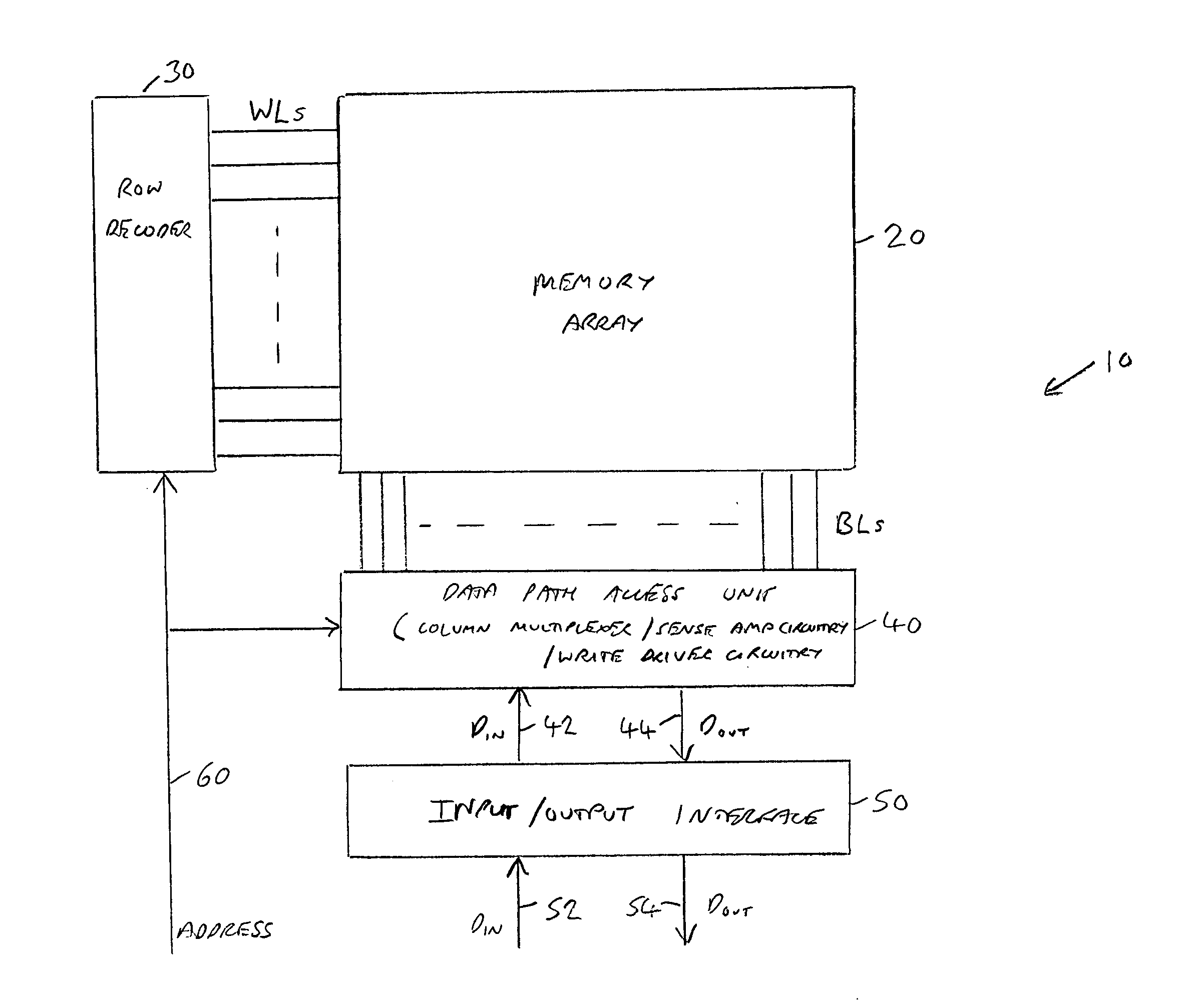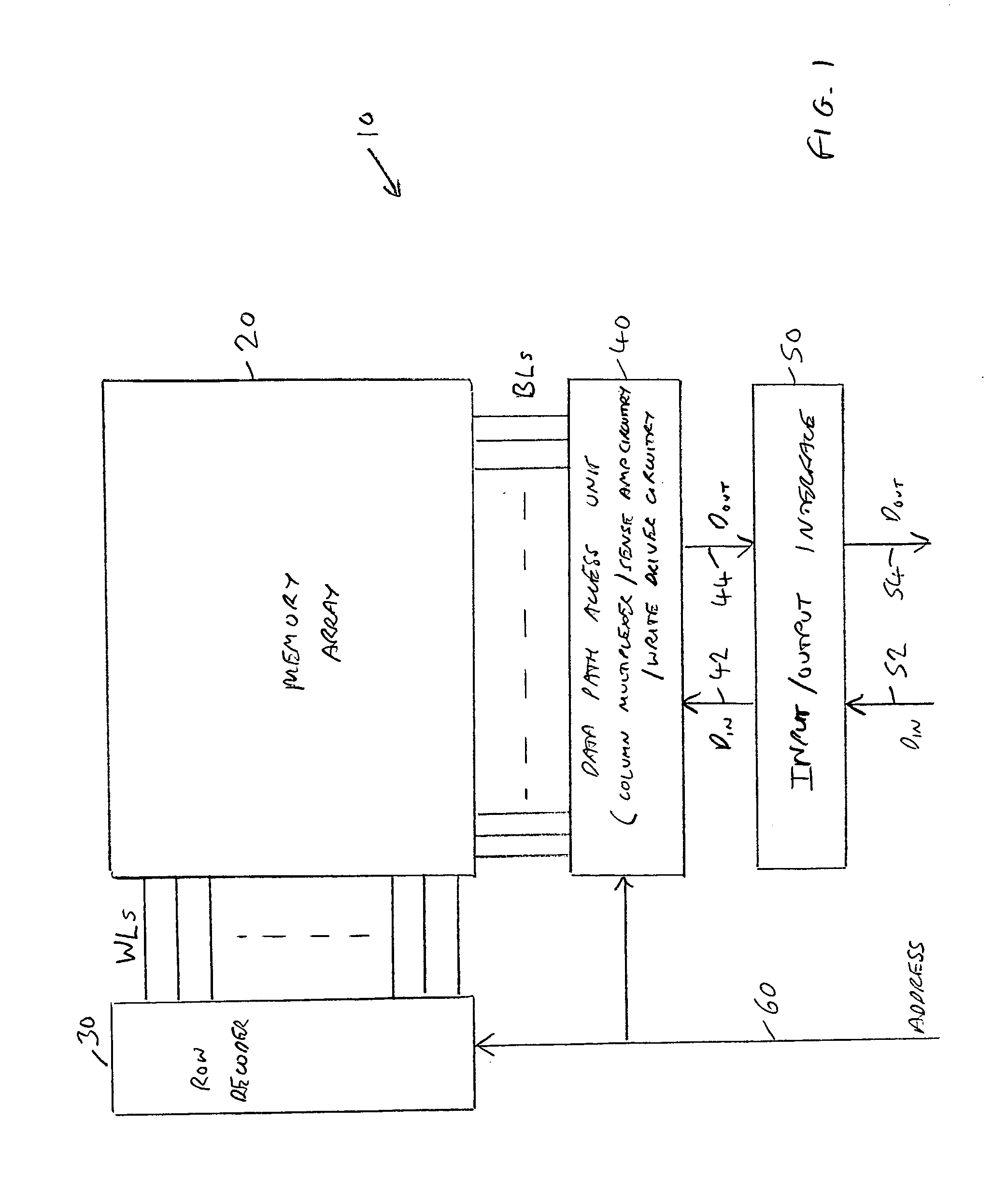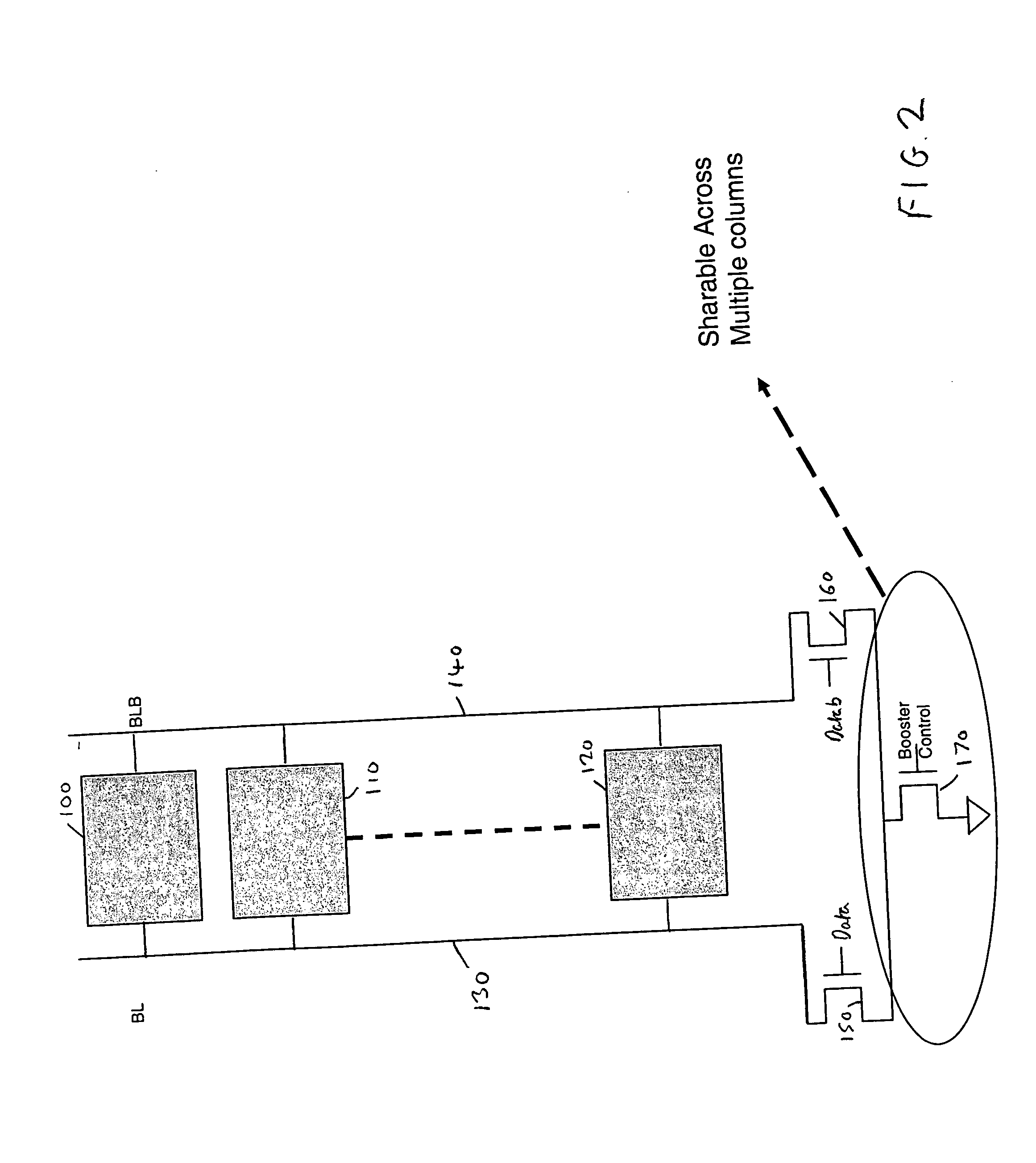Memory device and method for performing write operations in such a memory device
a memory device and write operation technology, applied in the direction of information storage, static storage, digital storage, etc., can solve the problems of power consumption, significant power consumption associated with the memory device, and the achievement of low voltage memory device, so as to improve the speed of write operation, reduce the supply voltage, and reduce the supply voltage
- Summary
- Abstract
- Description
- Claims
- Application Information
AI Technical Summary
Benefits of technology
Problems solved by technology
Method used
Image
Examples
Embodiment Construction
[0034]FIG. 1 is a block diagram of a memory device 10 in accordance with one embodiment of the present invention. The memory device 10 has a memory array 20 consisting of a plurality of memory cells arranged in rows and columns. Each row has a word line (WL) connected thereto, and each column has at least one bit line (BL) connected thereto, the exact number of bit lines connected to each column being depending on embodiment. In one particular embodiment, the memory array consists of SRAM cells, and a pair of bit lines are connected to each column of cells.
[0035]When a memory access request is received, the address specified by the memory access request is routed over path 60 to a row decoder 30 and to a data path access unit 40. The row decoder 30 is arranged to decode the address and dependent thereon drive a control signal over one of the word lines in order to select one of the rows within the memory array 20. Similarly, the data path access unit 40 is arranged dependent on the ...
PUM
 Login to View More
Login to View More Abstract
Description
Claims
Application Information
 Login to View More
Login to View More - R&D
- Intellectual Property
- Life Sciences
- Materials
- Tech Scout
- Unparalleled Data Quality
- Higher Quality Content
- 60% Fewer Hallucinations
Browse by: Latest US Patents, China's latest patents, Technical Efficacy Thesaurus, Application Domain, Technology Topic, Popular Technical Reports.
© 2025 PatSnap. All rights reserved.Legal|Privacy policy|Modern Slavery Act Transparency Statement|Sitemap|About US| Contact US: help@patsnap.com



